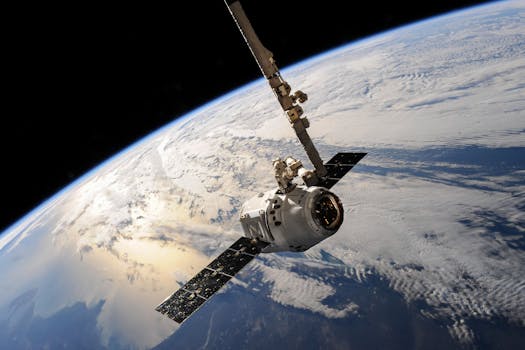
MEO Satellites: Revolutionizing Global Communication with Medium Earth Orbit Technology
MEO satellites, or Medium Earth Orbit satellites, are a type of satellite that operates in a medium earth orbit, which is approximately 2,000 to 36,000 kilometers above the earth’s surface. This orbit is higher than the low earth orbit (LEO) used by many satellite constellations, but lower than the geostationary orbit (GEO) used by traditional telecommunications satellites. MEO satellites are designed to provide a balance between the benefits of LEO and GEO satellites, offering faster and more reliable connections than traditional satellites, while also providing global coverage and a lower latency than LEO satellites.
At the beginning of MEO satellites research, it was clear that the technology had the potential to revolutionize the way we communicate globally. With the ability to provide high-speed internet, voice, and data services to remote and underserved areas, MEO satellites are an attractive solution for many industries, including telecommunications, maritime, and aviation. In addition to their commercial applications, MEO satellites are also used by governments and organizations for a variety of purposes, including Earth observation, navigation, and scientific research.
How MEO Satellites Work
MEO satellites work by using a network of satellites in medium earth orbit to provide coverage of the earth’s surface. Each satellite in the constellation is equipped with a transponder, which is used to receive and transmit signals to and from earth stations. The satellites are also equipped with antennas, which are used to communicate with other satellites in the constellation and with earth stations. The signals transmitted by the satellites are received by earth stations, which are typically located in remote or underserved areas. The earth stations then transmit the signals to the intended recipient, who can be located anywhere in the world.
Benefits and Applications of MEO Satellites
The benefits of MEO satellites include their ability to provide high-speed internet, voice, and data services to remote and underserved areas. They also offer a lower latency than traditional satellites, which makes them ideal for applications that require real-time communication, such as video conferencing and online gaming. In addition to their commercial applications, MEO satellites are also used by governments and organizations for a variety of purposes, including Earth observation, navigation, and scientific research. For example, MEO satellites can be used to monitor climate change, track weather patterns, and provide navigation services for aircraft and ships.
Future of MEO Satellites
The future of MEO satellites looks bright, with many companies and organizations investing in the development of new MEO satellite constellations. One of the most significant developments in the MEO satellite industry is the launch of the O3b constellation, which is a network of MEO satellites that provides high-speed internet services to remote and underserved areas. The O3b constellation is designed to provide speeds of up to 1.2 Gbps, making it one of the fastest satellite constellations in the world. Other companies, such as SES and Intelsat, are also investing in the development of new MEO satellite constellations, which is expected to drive growth and innovation in the industry.





